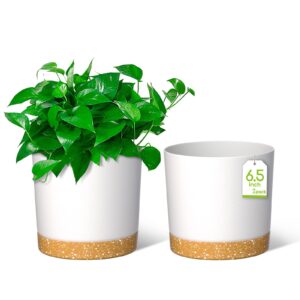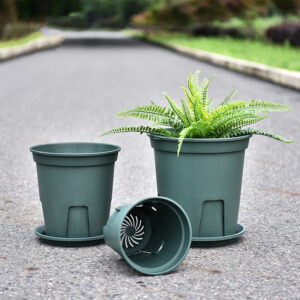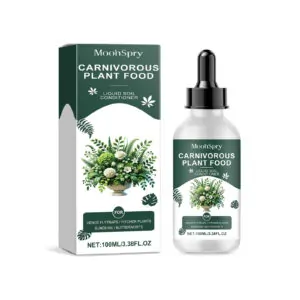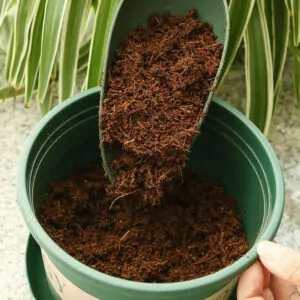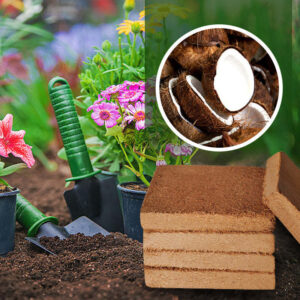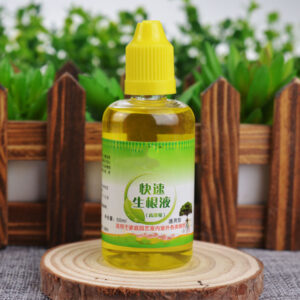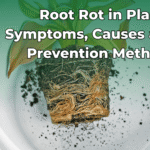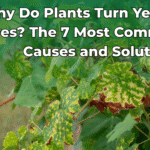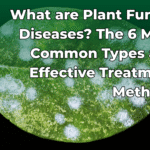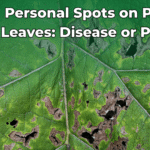The Fiddle Leaf Fig (Ficus lyrata) is a popular indoor plant known for its large, violin-shaped leaves. However, it can be susceptible to various diseases and problems if not properly cared for. This guide will help you identify and address the most common issues to keep your plant healthy.
Root Rot
Root rot is a serious condition caused by overwatering and poor drainage. It leads to the decay of the plant’s roots, impairing its ability to absorb water and nutrients.Real Simple
Symptoms:
- Yellowing or faded leaves
- Stunted growth
- Wilting despite moist soil
- Mushy, discolored roots Southern Living
Prevention and Treatment:
- Ensure your pot has adequate drainage holes.
- Use well-draining soil.
- Allow the top inch of soil to dry out before watering again.
- If root rot is detected, remove the plant from its pot, trim away affected roots, and repot in fresh soil.Real Simple
- All Products
Ceramic Flowerpot, Nordic Style – Breathable, Durable & Handmade Plant Pot (Multiple Sizes, Without Disc)
Price range: £28.99 through £49.99 Select options This product has multiple variants. The options may be chosen on the product page - All Products
Drainage Pot for Plants – Plastic Root Control Planter with Tray for Indoor & Outdoor Use
Price range: £19.99 through £81.08 Select options This product has multiple variants. The options may be chosen on the product page
Leaf Spot Diseases
spot diseases can be caused by fungi or bacteria, leading to unsightly spots on the leaves.
Symptoms:
- Brown or black spots on leaves
- Yellow halos around spots
- Premature leaf Wikipedia
Prevention and Treatment:
- Avoid overhead watering to keep leaves dry.
- Improve air circulation around the plant.
- Remove and dispose of affected leaves.
- Use appropriate fungicides or bactericides if necessary.Better Homes & Gardens
Brown Spots on Leaves
Brown spots can result from various factors, including overwatering, underwatering, low humidity, or pest infestations.
Causes:
- Overwatering leading to root rot
- Underwatering causing dry, crispy spots
- Low humidity levels
- Pest infestations like spider mites or mealybugs
Solutions:
- Adjust watering practices to maintain consistent soil moisture.
- Increase humidity using a humidifier or pebble tray.
- Inspect the plant regularly for pests and treat accordingly.The Guardian
- All Products
Plant Care Humidifier – Ultrasonic, Mute, Intelligent with Remote Control and Aromatherapy
£138.40 Select options This product has multiple variants. The options may be chosen on the product page - All Products
Flame Effect Aromatherapy Humidifier – Ultrasonic Plant Care Device (250 ml)
£29.99 Select options This product has multiple variants. The options may be chosen on the product page - All Products
Ultrasonic Aroma Diffuser with Colorful Night Light – Silent Essential Oil Diffuser with Remote Control
Price range: £76.50 through £83.61 Select options This product has multiple variants. The options may be chosen on the product page - All Products
Portable Humidifier for Plants – Keep Your Greenery Healthy Anywhere
£28.87 Select options This product has multiple variants. The options may be chosen on the product page
Leaf Drop
Can be alarming but is often a response to environmental stress.
Common Triggers:
- Sudden changes in light or temperature
- Overwatering or underwatering
- Low humidity
- Pest infestations
Prevention:
- Maintain consistent care routines.
- Place the plant in a stable environment with adequate light.
- Avoid moving the plant frequently.
Pest Infestations
Pests like spider mites, mealybugs, and scale insects can affect Fiddle Leaf Figs.The Spruce
Identification:
- Sticky residue on leaves
- Visible insects or webbing
- Distorted or discolored leavesWikipedia
Management:
- Isolate the affected plant.
- Use insecticidal soap or neem oil to treat infestations.
- Regularly inspect plants to catch infestations early.Wikipedia
Nutrient Deficiencies
Lack of essential nutrients can lead to poor growth and leaf discoloration.
Symptoms:
- Yellowing leaves
- Stunted growth
- Leaf drop
Solutions:
- Use a balanced, water-soluble fertilizer during the growing season.
- Follow the recommended dosage to avoid over-fertilization.
- All Products
Carnivorous Plant Food Liquid Soil Conditioner – MoonSpry Nutrient Drops for Venus Flytraps, Pitcher Plants, Sundews, Butterworts – 100ml
£19.99 Select options This product has multiple variants. The options may be chosen on the product page - All Products
Coconut Brick for Potting Mix – Desalted and Nutrient-Rich for Optimal Plant Growth, High-Quality
Price range: £24.99 through £69.99 Select options This product has multiple variants. The options may be chosen on the product page - All Products
Coconut Brick Nutrient Soil – High Absorption Organic Growing Medium for Flowers and Vegetables
Price range: £14.49 through £29.34 Select options This product has multiple variants. The options may be chosen on the product page - All Products
Fast Rooting Plant Nutrient Solution – Rapid Root Growth Enhancer for Stronger Seedlings and Healthier Plants – 50ml Liquid
£13.94 Select options This product has multiple variants. The options may be chosen on the product page - All Products
Fruit Plant Growth Powder – Natural Plant Growth Enhancer for Increased Yield & Stress Resistance
£13.50 Select options This product has multiple variants. The options may be chosen on the product page
Environmental Stress
Fiddle Leaf Figs are sensitive to their environment. Factors like drafts, temperature fluctuations, and low humidity can cause stress.
Tips:
- Keep the plant away from air vents and drafts.
- Maintain indoor temperatures between 60°F and 85°F (15°C to 29°C).
- Use a humidifier to maintain humidity levels between 30% and 65%.
Frequently Asked Questions (FAQ)
Q: How often should I water my Fiddle Leaf Fig?
A: Water your Fiddle Leaf Fig when the top 1–2 inches (2.5–5 cm) of soil feels dry. Typically, this means watering once a week, but it may vary based on humidity, light, and season. Be careful not to overwater—root rot is a common issue.
Q: Why are the leaves on my Fiddle Leaf Fig turning brown?
A: Brown leaves can be caused by overwatering, underwatering, low humidity, or sudden environmental changes. Check for consistent watering and avoid cold drafts or sudden sunlight changes. Trimming damaged leaves can also help redirect the plant’s energy.
Q: Can I place my Fiddle Leaf Fig in direct sunlight?
A: It prefers bright, indirect sunlight. Direct sunlight for extended periods may cause leaf burn, while too little light can result in slow growth and leaf drop. A spot near a north- or east-facing window usually works well.
Q: How can I increase humidity for my Fiddle Leaf Fig?
A: You can use a humidifier, place a water tray nearby, mist the leaves occasionally, or group it with other plants. Fiddle Leaf Figs thrive in 40–60% humidity.
Q: Is it safe to fertilize my plant year-round?
A: It’s best to fertilize during the growing season (spring and summer). Use a balanced, water-soluble fertilizer once a month. Avoid fertilizing in fall and winter, as the plant is typically dormant.
Q: My plant looks droopy—is it dying?
A: Not necessarily. Drooping can occur from both overwatering and underwatering. Check the soil moisture before acting. Also, make sure the pot has proper drainage to prevent soggy roots.
Fiddle Leaf Fig: Tips
Q: Should I repot my Fiddle Leaf Fig?
A: Repot every 1–2 years, ideally in spring. If roots are growing out of the drainage holes or the plant seems root-bound, it’s time to move to a slightly larger pot with fresh, well-draining soil.
Q: Can I propagate my Fiddle Leaf Fig?
A: Yes! You can propagate it through stem cuttings placed in water or moist soil. Be sure to cut just below a leaf node and give it indirect light until roots develop (typically 4–6 weeks).
Q: Is the Fiddle Leaf Fig toxic to pets?
A: Yes. The plant contains a sap that can cause oral irritation and digestive discomfort in pets (especially cats and dogs). Keep it out of their reach if possible.
Q: How do I clean the leaves of my Fiddle Leaf Fig?
A: Use a soft, damp cloth to gently wipe off dust from the leaves every few weeks. Clean leaves allow better light absorption and improve overall plant health.
Q: What’s the ideal temperature for my Fiddle Leaf Fig?
A: It thrives in temperatures between 65–75°F (18–24°C). Avoid placing it near cold drafts, air conditioners, or heaters, as sudden temperature changes can cause stress
External Resource: For more detailed information on Fiddle Leaf Fig care, visit The Spruce.
Read More:
- Fiddle Leaf Fig: A Stylish and Iconic Indoor Plant – Learn why this plant is a favorite among interior design lovers.
- How to Grow Fiddle Leaf Fig at Home – Complete growing guide to help your Fiddle Leaf Fig flourish indoors.
- Fiddle Leaf Fig Care Guide – Essential tips to ensure your plant stays healthy and vibrant.
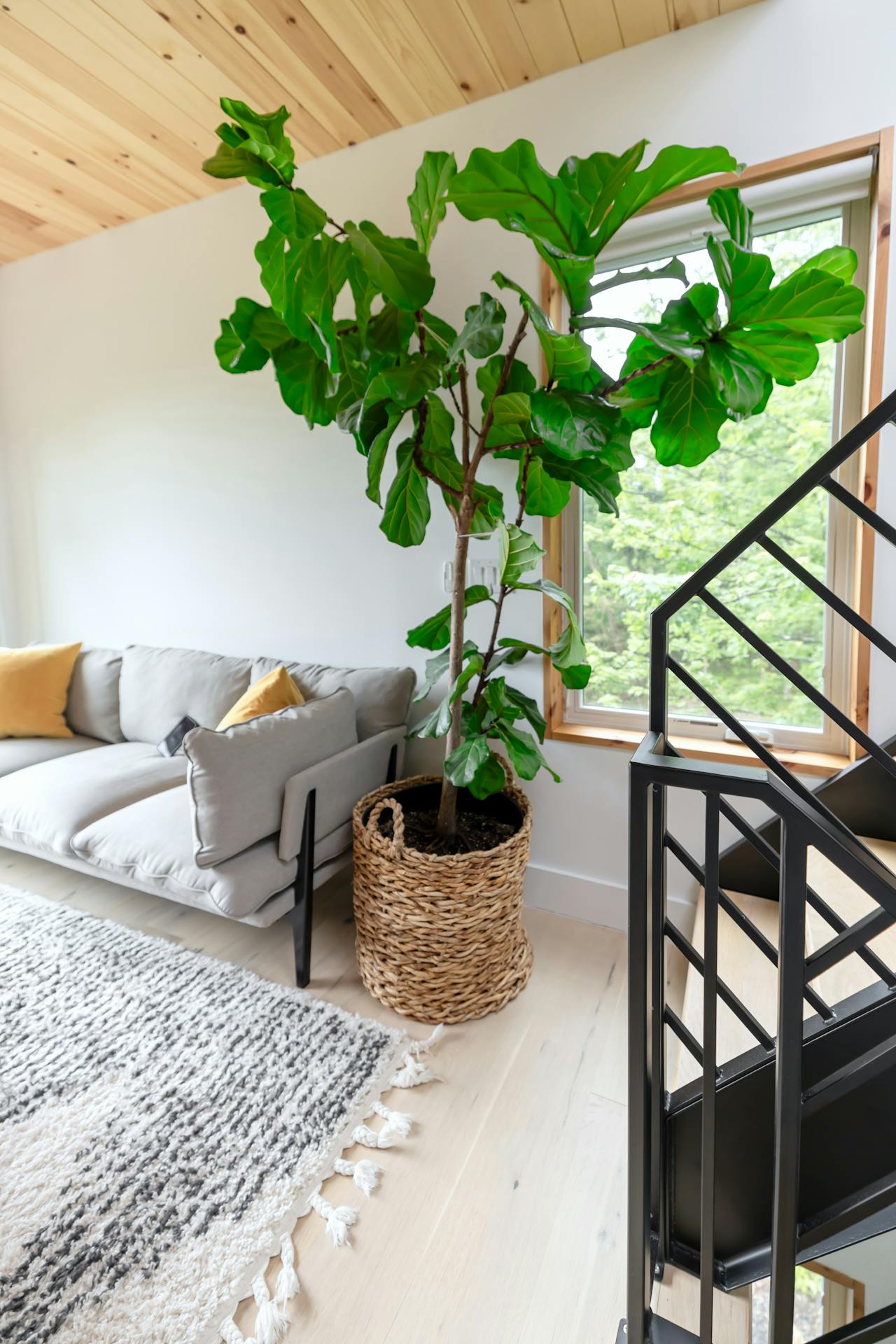
Plant Profile

Common Name

Plant Type

Mature Size

Sun Exposure

Soil Type

Soil pH

Bloom Time

Color

Hardiness Zones

Native Area

Humidity

Lighting
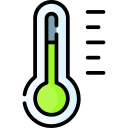
Temperature

Difficulty

Hibernation
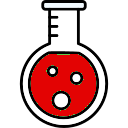
Toxicity



